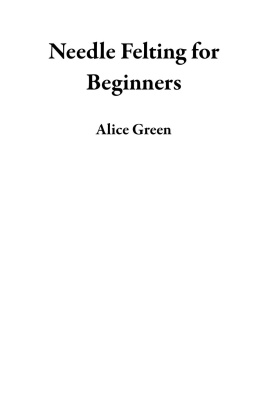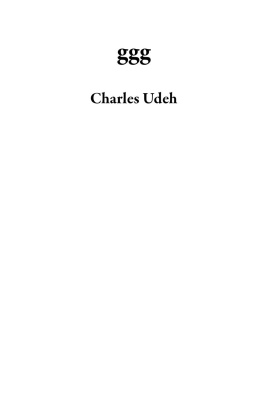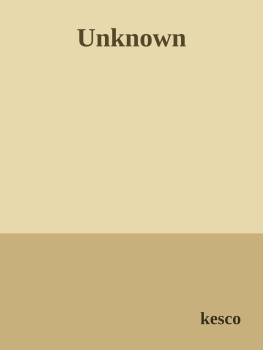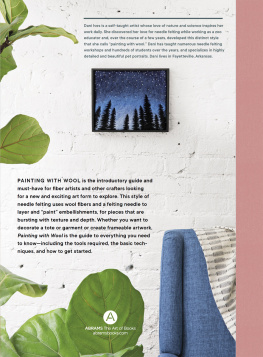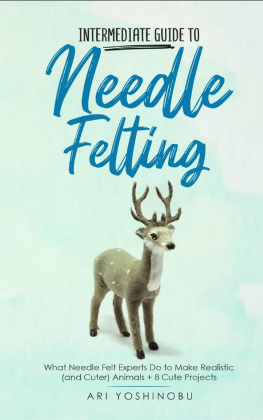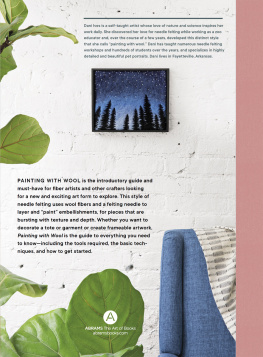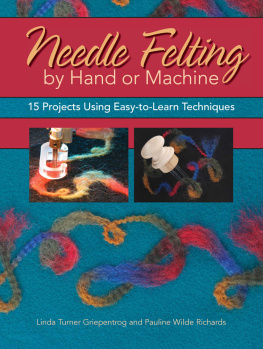Pagebreaks of the print version

First published in Great Britain in 2022 by
Pen & Sword WHITE OWL
An imprint of
Pen & Sword Books Ltd
Yorkshire Philadelphia
Copyright Linda Calver 2022
ISBN 9781526780645
eISBN 9781526780652
Mobi ISBN 9781526780652
The right of Linda Calver to be identified as Author of this work has been asserted by her in accordance with the Copyright, Designs and Patents Act 1988.
A CIP catalogue record for this book is available from the British Library.
All rights reserved. No part of this book may be reproduced or transmitted in any form or by any means, electronic or mechanical including photocopying, recording or by any information storage and retrieval system, without permission from the Publisher in writing.
Design: Paul Wilkinson
Pen & Sword Books Limited incorporates the imprints of Atlas, Archaeology, Aviation, Discovery, Family History, Fiction, History, Maritime, Military, Military Classics, Politics, Select, Transport, True Crime, Air World, Frontline Publishing, Leo Cooper, Remember When, Seaforth Publishing, The Praetorian Press, Wharncliffe Local History, Wharncliffe Transport, Wharncliffe True Crime and White Owl.
For a complete list of Pen & Sword titles please contact:
PEN & SWORD BOOKS LIMITED
47 Church Street, Barnsley, South Yorkshire, S70 2AS, England
E-mail:
Website: www.pen-and-sword.co.uk
Or
PEN AND SWORD BOOKS
1950 Lawrence Rd, Havertown, PA 19083, USA
E-mail:
Website: www.penandswordbooks.com
Introduction
WELCOME TO MY BOOK! A little bit about me.
I am a self-taught hobby felter and have been needle felting for the last eight years. I like to do occasional craft fairs and I run a variety of workshops teaching mainly needle felting but also some wet felting, which I touch on in .
I love the versatility of working with wool fleece and find the endless ideas of what you can create from it just so exciting! You dont have to be an incredible artist to achieve wonderful things in this craft, although it does take a little patience and practice to get it right. I also must warn you it is highly addictive. Just the sight and smell of piles of beautiful wool fleece is just heavenly. Wool can be purchased pre-dyed in hundreds of beautiful colours and shades, and there are many different natural colours of wool fleece, varying in colour and texture for all the different breeds of sheep they are taken from.
In this book I will teach you the basics, starting off with easy simple shapes and progressing through to slightly more difficult projects, all of which are suitable for you to start learning about the wonderful art of needle felting. I hope you enjoy working through this book as much as I have enjoyed producing it!
The History of Needle Felting
NEEDLE FELTING IS the process of tangling wool fleece using a barbed needle and using this to sculpt it into shapes. This process can allow the crafter to make the wool into 3-dimensional animals, people or all sorts of wonderful creations, by sculpting shapes, attaching them together and adding more wool layers.
Using sheep and other animal fleece to make felt dates back hundreds of years, but the craft of needle felting started around the 1980s and continues to grow in popularity. Prior to that, felt was made industrially with needles, much the same process we use today in our needle felting but on a huge scale with hundreds of needles in large machines to produce felt in sheets from wool fleece.
You can use other animal fleeces in needle felting, such as alpaca, and mohair. Not all of these types of fleece needle felt well, but sometimes they could be useful to use as fur for the coat or on the surface of a project.
Tools and Materials
MAIN TOOLS
Some of the main tools you will need for the projects in this book include:
Sponge/pad/other felting surface
Needles
Needle holder
Needle container
Finger guards
Awl
Pipe cleaners
Pliers
Scissors
Wire cutters
Animal eyes or beads
Wooden skewer and cocktail stick
FELTING SURFACES
Felting surfaces or pads are used to work on to protect your needle from hitting the table underneath, which could snap your needles.
I mainly use a felting pad made of high-density foam of at least 6cm (2in) thick. The size pad I find ideal for most projects is 21cm x 21cm (8in x 8in), which you can purchase online easily. To protect the sponge from the needles and extend the lifetime of the pad, I use a piece of pure wool felt laid over the top of the mat. This is optional, however, and I only use this because I do a LOT of felting! For felting something that is flat we can also use a Clover felting brush which is great for this purpose, especially used in conjunction with the Clover punch tool.
FELTING NEEDLES
Felting needles are long, steel needles that have tiny barbs on the ends. It is the action of these barbs when pushed into the fleece that tangle the fibres and cause the wool to felt together, which with repeated stabbing forms a shape. The needles come in different shapes like triangles, stars, twisted and reverse, all of which are better suited to some jobs than others.
Needles also come in different gauges of thickness to suit various stages of your work, the higher the gauge being finer and lower gauges being coarser. A 42 gauge is very fine, whilst 32 gauge is very coarse, with various gauges in between.
I mainly use 38, 40 and 42 gauges in triangle shape, and very occasionally a 36, so to keep things simple for this book, these are what we will be using for the projects. When using more than one needle I use the pink Clover pen tool which is super and very comfortable to use. This comes already loaded with three medium needles. The green and yellow Clover punch tool is a very handy tool to own as it assists greatly with flat felting and also for smoothing your 3-dimensional figures for a nice finish. All tools are made in such a way that it is easy to replace any broken needles.
Needles are extremely brittle and can break very easily, so while you are beginning your needle felting I would suggest purchasing a few of each size to have at hand! When felting, always insert the needle and pull it back out again in the same direction. Never try to bend the needle when it is inside your work, as this will snap the tip off. There is a stockist list at the back of the book. Please note that most people who sell needles have their own colour code for sizes of needles, so go by the gauge and not the colour when buying replacements. I mention this as it was something that I got confused with when I first started needle felting, and I ordered the same colour from a different seller and of course, they were a different gauge.


